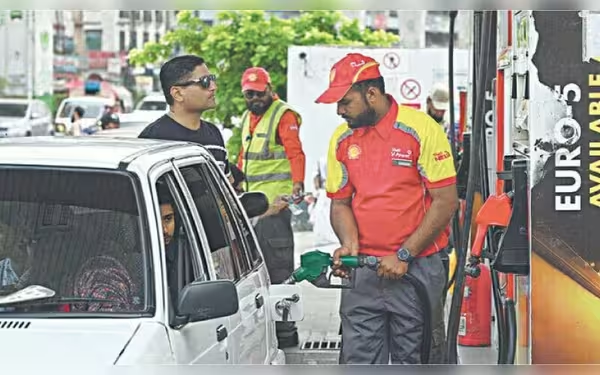Saturday, November 16, 2024 07:36 PM
Pakistan Maintains Fuel Prices, Increases RLNG Rates
- Petrol and diesel prices remain unchanged.
- RLNG rates increase by 2.7 percent for November.
- Government imposes significant taxes on fuel products.
 Image Credits: dawn
Image Credits: dawnPakistan maintains petrol and diesel prices while increasing RLNG rates by 2.7% for November amid fluctuating international oil prices.
In a significant announcement made on Friday, the government of Pakistan has decided to maintain the prices of petrol and high-speed diesel (HSD) for the upcoming fortnight. The prices will remain at Rs248.38 per litre for petrol and Rs255.14 per litre for HSD. This decision comes amidst fluctuating international oil prices, which have a direct impact on local fuel costs.
The Ministry of Finance revealed that the Oil and Gas Regulatory Authority (Ogra) assessed the consumer prices of petroleum products based on the price variations observed in the international market over the past two weeks. After careful consideration, it was concluded that the prices of petrol and HSD would not change during this period.
However, there is a notable increase in the rate of re-gasified liquefied natural gas (RLNG) for November. Ogra has announced a rise of up to 2.7 percent in RLNG prices, with the new rates set at $13.26 per million British thermal unit for SNGPL and $12.80 per mmBtu for SSGCL. This increase is attributed to the higher costs of imported RLNG.
Currently, the government imposes a tax of approximately Rs76 per litre on both petrol and HSD. While the general sales tax (GST) on all petroleum products is zero, the government still levies a petroleum development levy (PDL) of Rs60 per litre on these fuels, which significantly affects the average consumer. Additionally, there is a customs duty of around Rs16 per litre on petrol and HSD, regardless of whether these products are locally produced or imported.
Moreover, oil companies and their dealers receive about Rs17 per litre in distribution and sale margins. This complex pricing structure highlights the importance of petrol and HSD as major revenue sources for the government, with monthly sales ranging between 700,000 to 800,000 tonnes. In contrast, the demand for kerosene remains relatively low, at just 10,000 tonnes per month.
Interestingly, the government also charges Rs50 per litre PDL on light diesel and high-octane blending components, which are primarily used in luxury imported vehicles. This further illustrates the diverse pricing strategies employed by the government to manage fuel costs and generate revenue.
While the decision to keep petrol and HSD prices unchanged may provide temporary relief to consumers, the increase in RLNG rates signals ongoing challenges in the energy sector. As global oil prices continue to fluctuate, it is crucial for consumers to stay informed about these changes and understand how they impact their daily lives. The government's pricing policies will remain a key factor in shaping the economic landscape, and consumers must navigate these waters with awareness and caution.













